Discover 20 hidden attractions, cool sights, and unusual things to do in Tabriz (Iran). Don't miss out on these must-see attractions: Azerbaijan Museum, Blue Mosque, and Bazaar of Tabriz. Also, be sure to include El-Gölü in your itinerary.
Below, you can find the list of the most amazing places you should visit in Tabriz (East Azarbaijan).
Table of Contents
Azerbaijan Museum
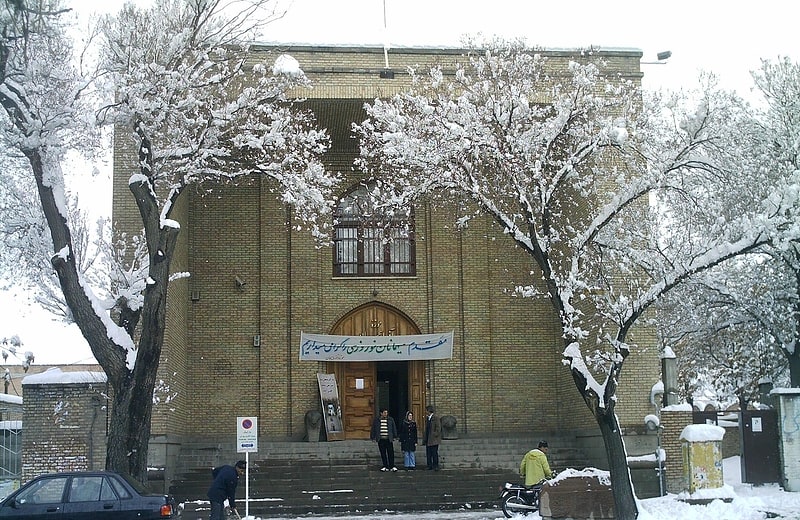
Also known as: موزه آذربایجان
Museum in Tabriz, Iran. Azerbaijan Museum is the major archaeological and historical museum in Tabriz, in the northwest part of Iran. It was established on April 1958. The museum consists of three major halls, a side yard, office rooms and a library. It mostly contains objects discovered from excavations in Iranian Azerbaijan, also some artworks and sculptures of artists. Its library contains more than 2500 books, both handwritten and printed, about history, archaeology, art and Iranian culture. Apart from National Museum of Iran in Tehran, Azerbaijan Museum has the largest collection belonging to different periods of Iran's history.[1]
Address: مصلای بزرگ تبریز, Tabriz
Blue Mosque
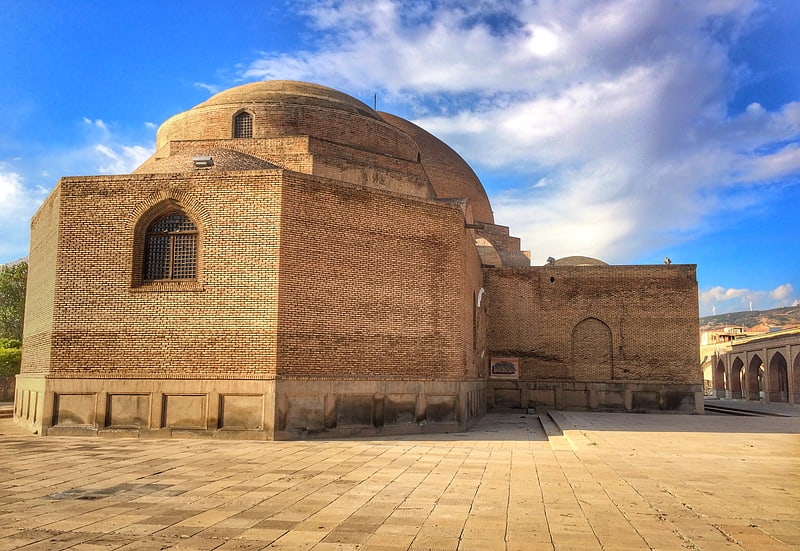
Also known as: مسجد کبود
15th-century mosque with ornate mosaics. The Blue Mosque is a historic mosque in Tabriz, Iran. The mosque and some other public buildings were constructed in 1465 upon the order of Jahan Shah, the ruler of Kara Koyunlu.
The mosque was severely damaged in an earthquake in 1780, leaving only the iwan (entrance hall). Reconstruction began in 1973 by Reza Memaran Benam under the supervision of Iranian Ministry of Culture. However, it is still incomplete.[2]
Address: Imam Khomeyni, Tabriz
Bazaar of Tabriz

Also known as: بازار تبریز
Shopping center in Tabriz, Iran. The Bazaar of Tabriz is a historical market situated in the city center of Tabriz, Iran. It is one of the oldest bazaars in the Middle East and the largest covered bazaar in the world. It is one of Iran's UNESCO World Heritage Sites.[3]
El-Gölü

Also known as: ایلگلی
Monument in Tabriz, Iran. El Goli, also called Shah Goli is a large historic park in the south east region of Tabriz, Iran. One of its main features is its large artificial lake, measuring 210 meters/700 ft square.[4]
Saat Tower
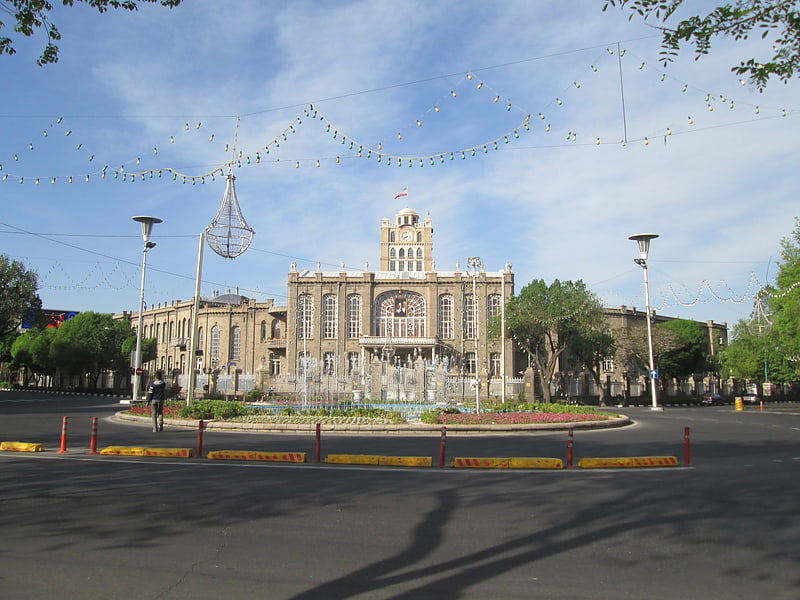
Also known as: کاخ شهرداری تبریز
Building in Tabriz, Iran. Sa'at Tower also known as Tabriz Municipality Palace is building in Tabriz which is used as the city hall and main office of the municipal government of Tabriz, East Azarbaijan Province, Iran. Saat tower or Saat in brief, as it briefed by locals in Tabriz, is a building with a hall, a tower with clock, and a small garden in Southwestern side of the building. A circular pool with fountains is located in the middle of the garden.[5]
Address: Saat Sq., Emam Ave, Tabriz
Arg of Tabriz
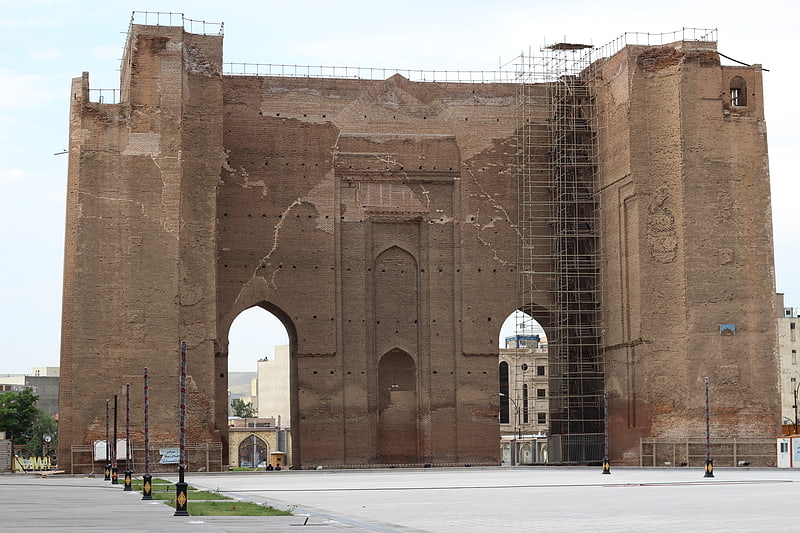
Also known as: ارگ تبریز
Mosque in Tabriz, Iran. Arg of Tabriz, is the remnants of a large acropolis fortification and city wall in downtown Tabriz, Iran. Its structure is visible from far distances in downtown Tabriz, if not blocked by the newly erected highrise buildings.
The structure was initially a compound, containing a great vaulted mosque, adjoining prayer halls and libraries, a vast courtyard containing a huge reflecting pool, and a mausoleum—all surrounded by a containing wall. It was built in 14th century during the Ilkhanate era. The point of pride for the building was that its vaulted ayvan was larger than the famous historic vault of Chosroes/Kisra or the Taq Kisra at Ctesiphon/Mada'in. However, with the sudden death of the governor of the city and with some construction complications in constructing a roofed building without pillar for such a huge complex, the mausoleum structure remained incomplete. In the 19th century with the rise of tensions between Iran and Russia the structure rapidly turned into the city's fort and additional military installations such as a barracks and cannon foundry were added to the original structure. During the twentieth century the military installations were removed from original construction and the surrounding of the ark turned into a park. In the late twentieth century a big mosque was built next to the citadel.[6]
Constitution House of Tabriz
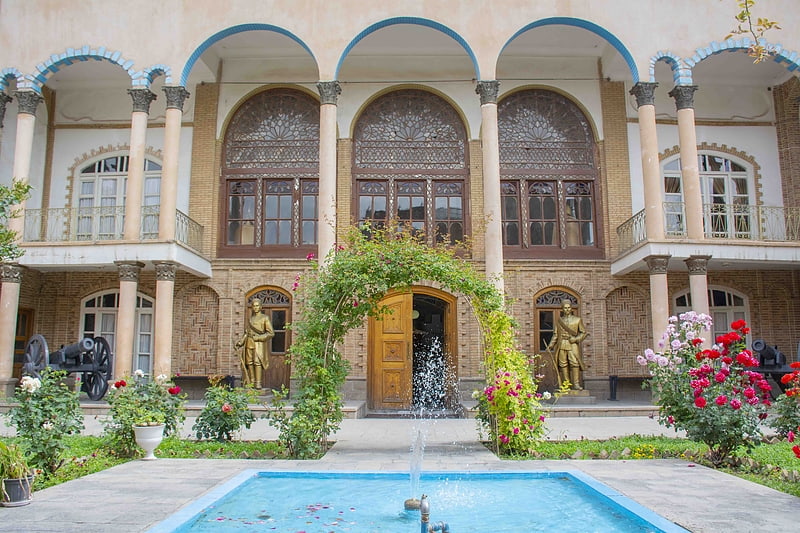
Also known as: خانه مشروطه
Edifice in Tabriz, Iran. The Constitution House of Tabriz, also known as Khaneh Mashrouteh, is a historical edifice located next to the Great Bazaar of Tabriz, on Motahari Ave in Tabriz, Iran. During the years which led to Constitutional Revolution and afterwards the house was used as a gathering place of the leaders, activists and sympathizers of the movement. Among them, the most famous people were Sattar khan, Bagher Khan, Seqat-ol-Eslam Tabrizi and Haji Mirza Aqa Farshi and the founder Haji Mehdi Kuzeh kanaani, himself a revolutionary activist and a well-reputed person of the time; who was named Abolmele, i.e. the father of the nation at the time. The two-story building was constructed in 1868 by Haj Vali Me'mar-e TabriziTABRIZ. It has numerous rooms and halls. The most beautiful part of the house is a skylight and corridor decorated with colorful glass and mirrors.[7]
Address: motahhari St, Tabriz
Jameh Mosque of Tabriz
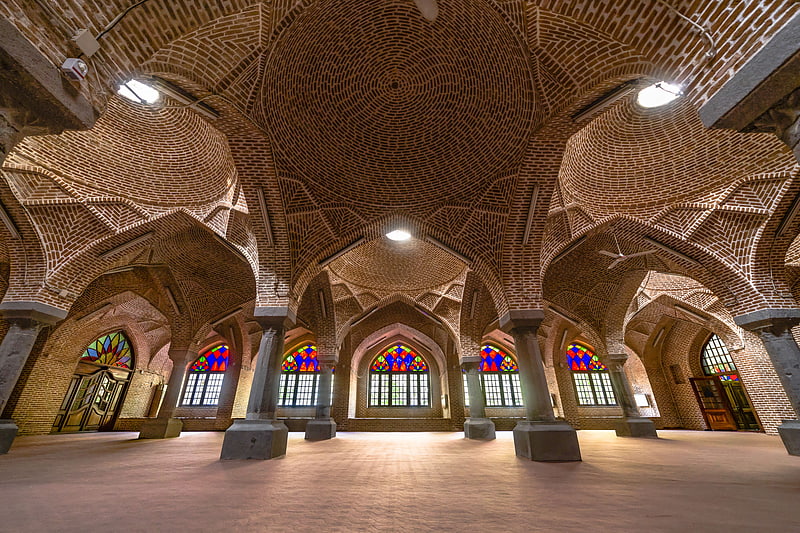
Also known as: مسجد جامع تبریز
Mosque in Tabriz, Iran. The Jāmeh Mosque is a large, congregational mosque in Tabrīz city, within the East Azerbaijan Province of Iran. It is located in the Bazaar suburb of Tabriz next to the Grand Bazaar of Tabriz and the Constitutional House of Tabriz.[8]
Shoghakat Church of Tabriz
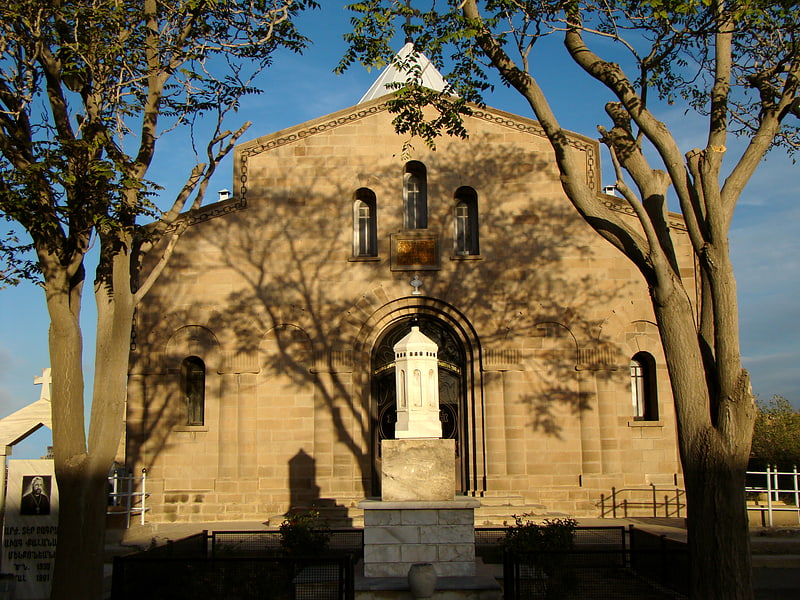
The Shoghakat Church or Shoghagat Church is an Armenian Apostolic church in Tabriz, East Azerbaijan Province, Iran completed in 1940.[9]
Saint Mary Church of Tabriz

Church in Tabriz, Iran. Saint Mary Church, Holy Mother of God Church or Surp Mariam Asdvadzadzin Church is an Armenian Apostolic church in Tabriz, East Azerbaijan Province, Iran completed in 1785. It is the largest and oldest Christian church in Tabriz and a notable centre for Armenian national and religious ceremonies held by the Armenian community of Tabriz.[10]
Maqbaratoshoara
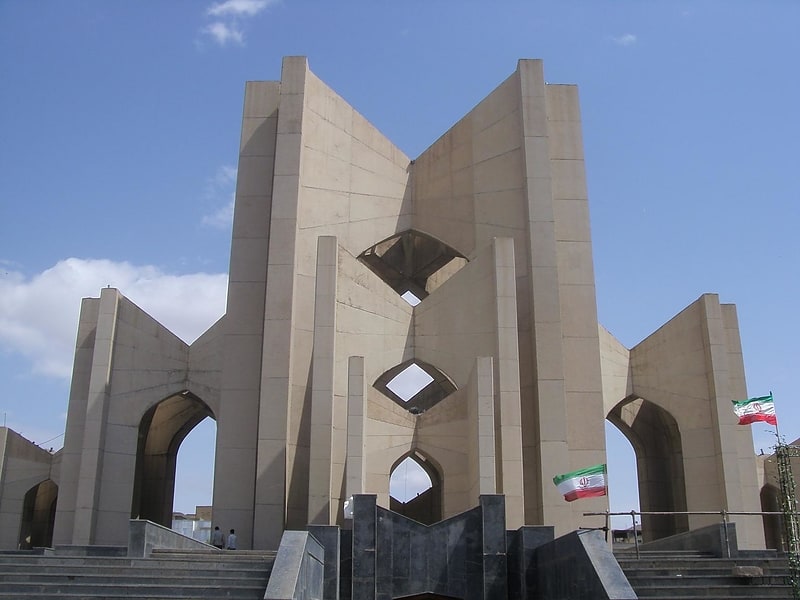
Also known as: مقبرةالشعرا
Graveyard. Maqbarat-o-shoara or the Mausoleum of Poets is a Maqbara belonging to classical and contemporary poets, mystics and other notable people, located in the Surkhab district of Tabriz in Iran. It was built by Tahmaseb Dolatshahi in the mid-1970s while he was the Secretary of Arts and Cultures of East Azarbaijan.
On the east side of Sayyed Hamzeh's grave and Ghaem Magham's grave, there is a graveyard containing the graves of important poets, mystics, scientists and well-known people of Tabriz. The Mausoleum was first mentioned by the medieval historian Hamdollah Mostowfi in his Nozhat ol-Gholub. Hamdollah mentions it being located in what, at the time, was the Surkhab district of Tabriz.
Since the 1970s, there have been attempts to renovate the graveyard area. Some work has been carried out like the construction of a new symbolic building on this site.
The first poet buried in this complex is Asadi Tusi.[11]
Iron Age Museum
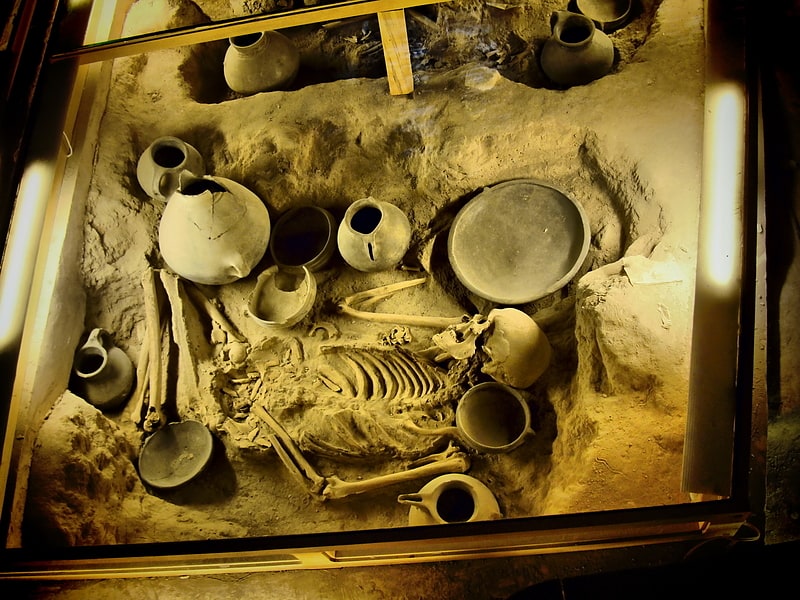
Museum. The Iron Age museum is a museum in Tabriz, Iran. Established in 2006, the museum is built over an iron age archaeological site. The burial site was uncovered in 1997 during the reconstruction of the nearby Blue Mosque. The Iron Age museum now contains exhibits, dig sites, and artifacts recovered from the site.[12]
Address: Emam St, Tabriz
Saheb-ol-Amr Mosque
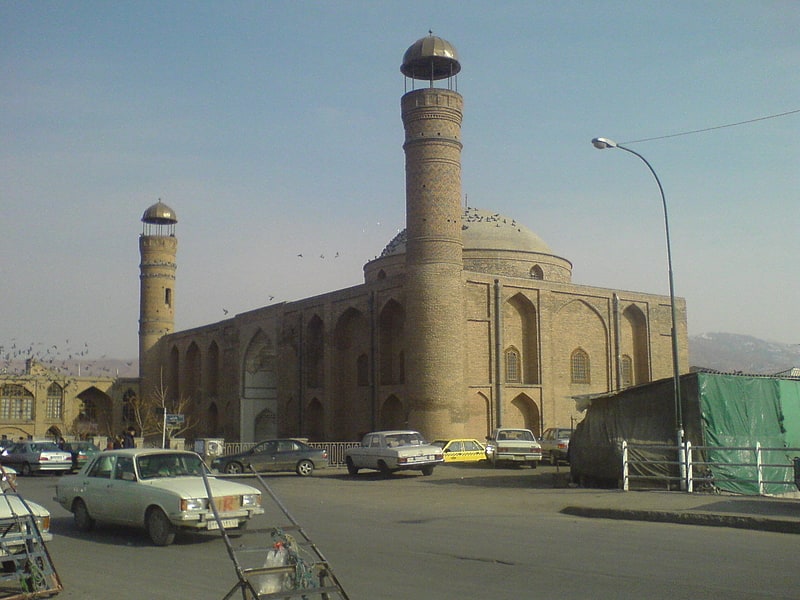
Also known as: مسجد صاحبالامر
Mosque in Tabriz, Iran. The Sāheb ol Amr Mosque or King Tahmasp Mosque is a mosque located on the east side of Saaheb Aabaad square in Tabriz, Iran. The mosque was initially built in 1636 and has a history of destruction and repair. The name Sāheb ol Amr is one of the titles of the last Twelver Shī‘ah Imām.[13]
Amir Nezam House
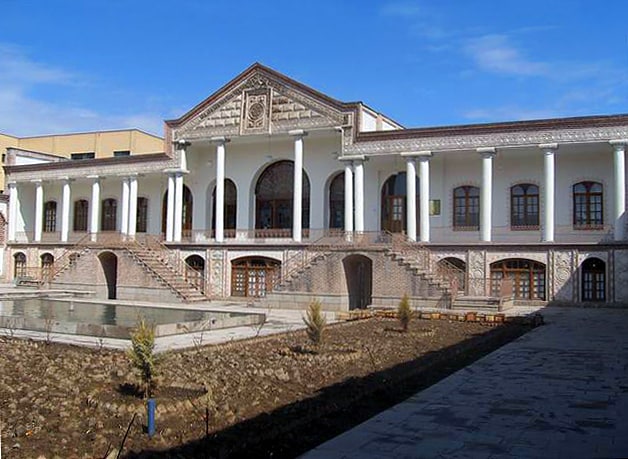
Also known as: موزه قاجار
Museum in Tabriz, Iran. The Amir Nezām House, or The Qajar Museum of Tabriz, is a historical building in the Sheshghelan district, one of the oldest quarters of the city of Tabriz, Iran. The base of the edifice covers an area of 1200 square metres. This monument which since 2006 houses a museum dedicated to the Qajar dynasty, was built in the period of the Crown Prince Abbas Mirza. It was renovated by Hasan-Ali Khan, Hasan Ali Khan Garroosy, in his position as the Major-domo of Azarbaijan, and used as his residency. In the subsequent periods, the house was employed as the official residence of the provincial governors of Azarbaijan. Because of persistent neglect over a long period of time, this building had come to be in such a bad state of disrepair that for a time it was seriously considered to demolish it and build a school in its place. Between 1993-2006 it has been subject of an extensive renovation process and since the completion of this undertaking it has been granted the National Heritage status.
The Sheshghelan district has been Governor's seat during the Ilkhanate dynasty. Hasan-Ali Khan, Amir Nezām Garousi, was born in 1820 in Bijar, in the Kurdistan Province. For a period of twenty-two years he served in various governmental positions. In particular, for a period he was in charge of the Iranian students sent to Europe by the government of Iran. He also served as the General of the Garrus Army and Head of the Security Guards of the High Court and of Arg-e Tabriz. He is buried in Mahan, in the Kerman Province. He is best remembered for his exemplary prose in the Persian language.[14]
Address: Farhang St, 51757 Tabriz
Golestan Park
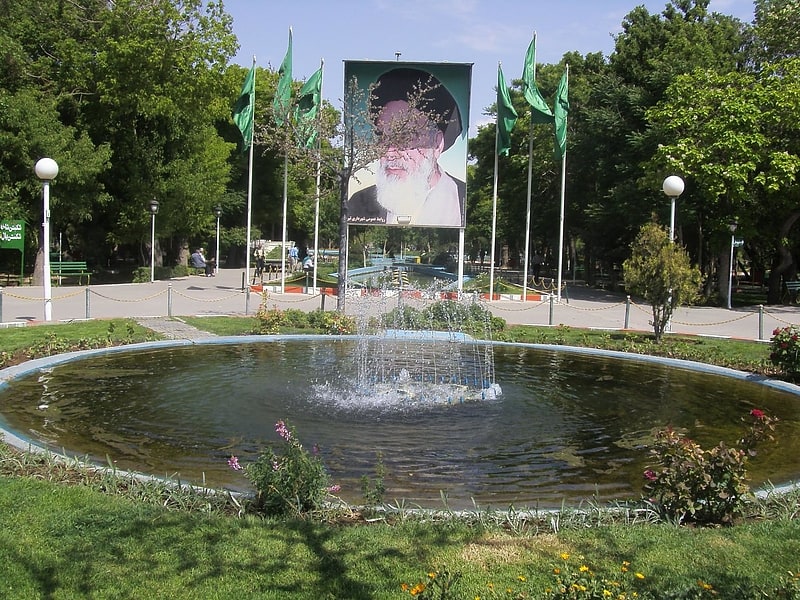
Also known as: باغ گلستان
Park in Tabriz, Iran. Golestan Park is a historical park in Tabriz, Iran. The park is located near to Qonqa Square in city center. The place, which was originally used as a public cemetery, was changed to a city park during the second Pahlavi era.
A marble clock tower, which has been devastated recently, had been founded at the front of main entrance of the park.[15]
Address: Felestin St., Tabriz
Qari Bridge
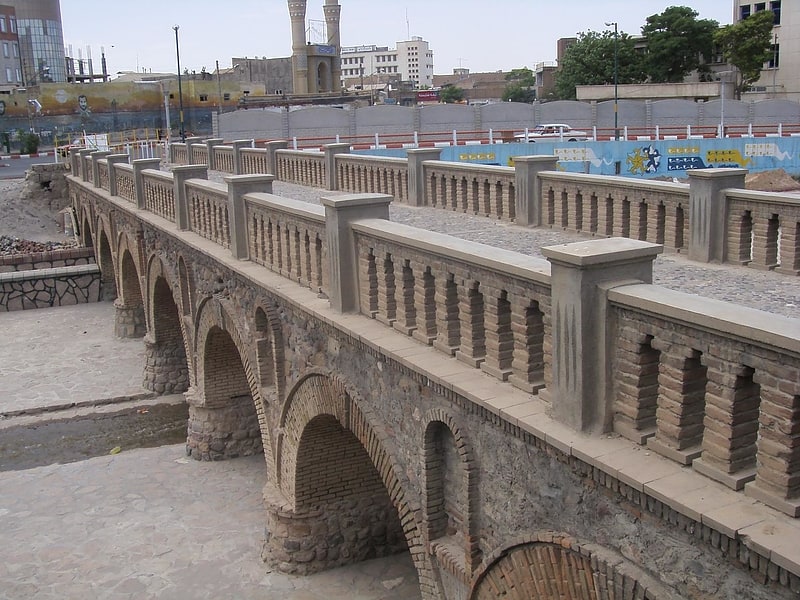
Also known as: پل قاری
Bridge in Tabriz, Iran. Qari Bridge is a historic stone bridges in Tabriz, Iran, over the Quri River. It has been built during Qajar dynasty, and is a part of Seghat-ol-eslam street, connecting Bazaar of Tabriz to the northern districts of Tabriz, among them Sheshgelan and Davachi. During Pahlavi dynasty, a smaller bridge was built for the pedestrians.[16]
Catholic Church of Tabriz
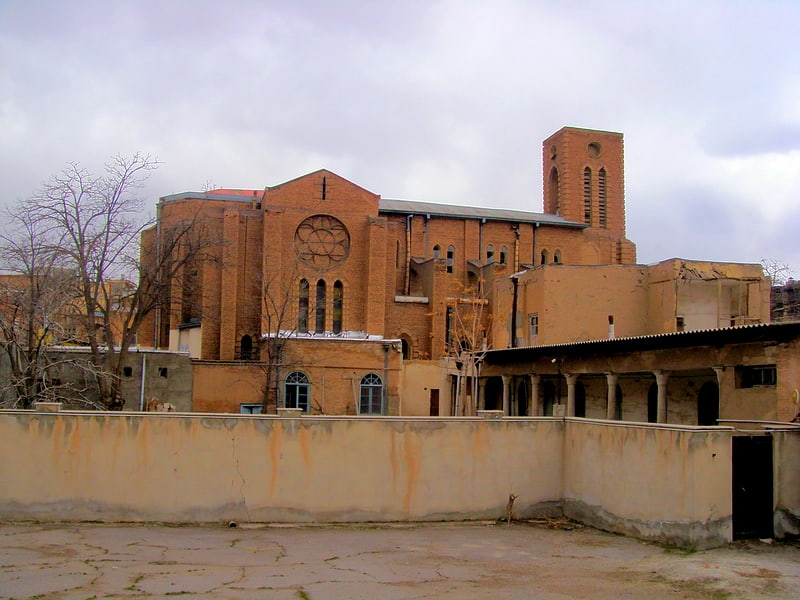
Catholic church in Isfahan, Iran. The Catholic Church belongs to Iran's Catholic Christian community. It was built in 1912 and is located in the Mearmear of Tabriz. The church, built with a brick facade, measures 30 metres high by 15 metres wide with the bell tower located on a small balcony.[17]
Khaqani Park

Also known as: بوستان خاقانی
Park in Tabriz, Iran. Khaqani Park or Boostan Khaqani is a small park in Tabriz, located between the Azerbaijan Museum and the Blue mosque. The park is named after the 12th century Persian Poet Khaqani Shirvani, who died in Tabriz.[18]
Sheshgelan
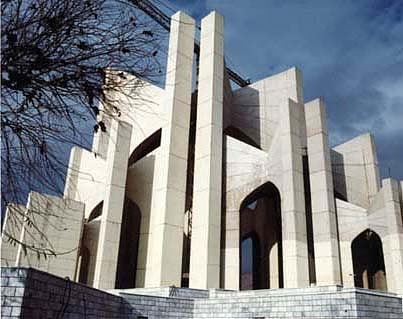
Sheshghelan is one of the districts of Tabriz. Located at the city center, it is one of the oldest quarters of the city and contains several historical buildings, including Qari Bridge, Amir Nezam House, Seyed Hamzeh shrine. Museum of Ostad Bohtouni and Maqbaratoshoara are other points of interest in Sheshgelan.
Sheshgelan, along with Bagmesha, Sirkhab and Davachi, were among the districts of Tabriz that were against the constitutional revolution of Iran.[19]
Tabriz Fire Fighting Tower

Also known as: برج آتشنشانی تبریز
Historical place in Tabriz, Iran. The Tabriz Firefighting Tower is a historical tower located in Tabriz, Iran. The tower, standing at 23 meters high, was built in 1917. It was used to investigate fire related incidents inside the city. The city was constantly observed from this tower for any signs of smoke and fire. Following any visual evidence, the firemen were informed and sent to the fire incident location.
The firefighting station of Tabriz, which is the first firefighting station in Iran, was established in 1832.[20]
Address: Khaqani St, Tabriz